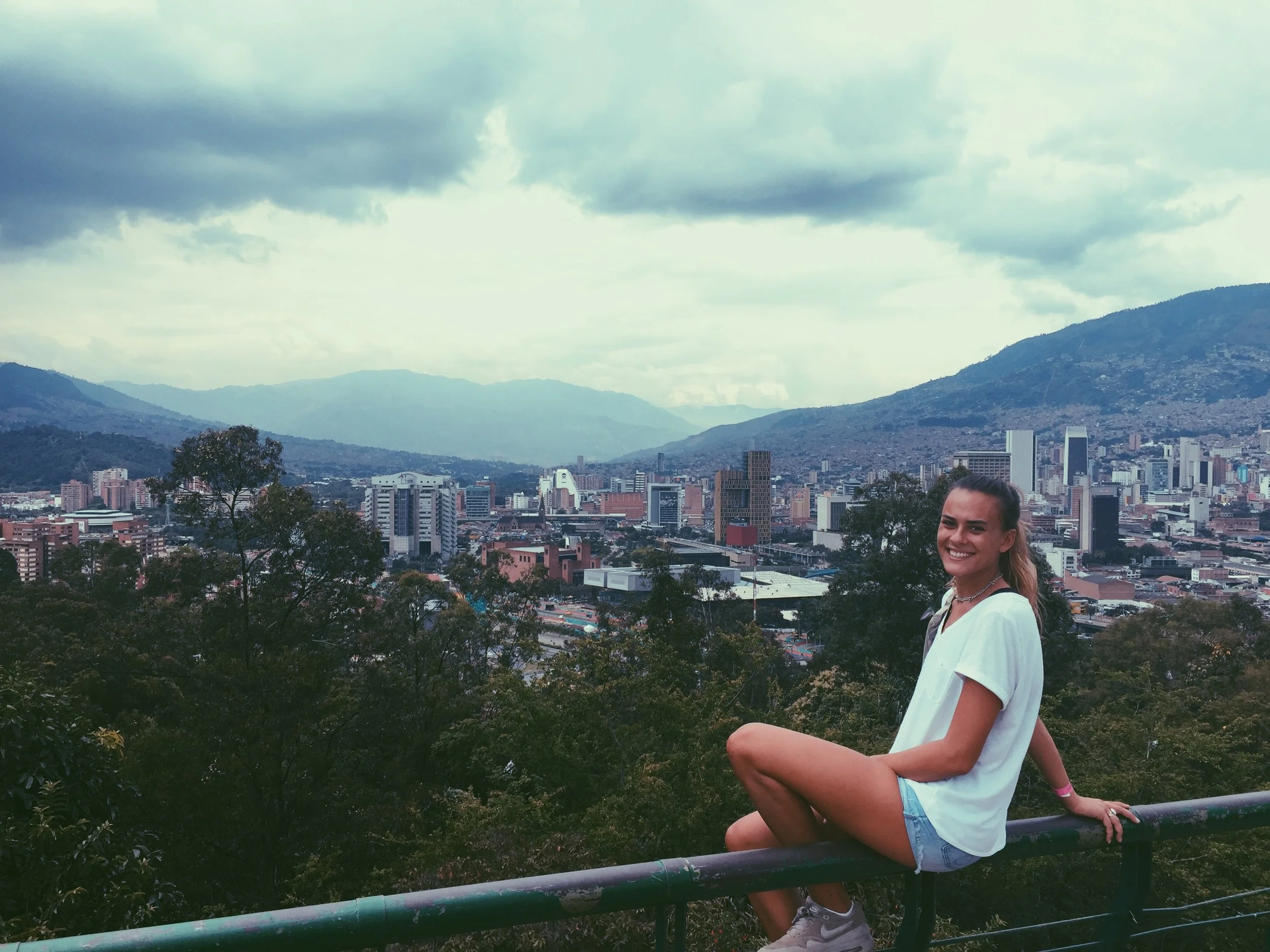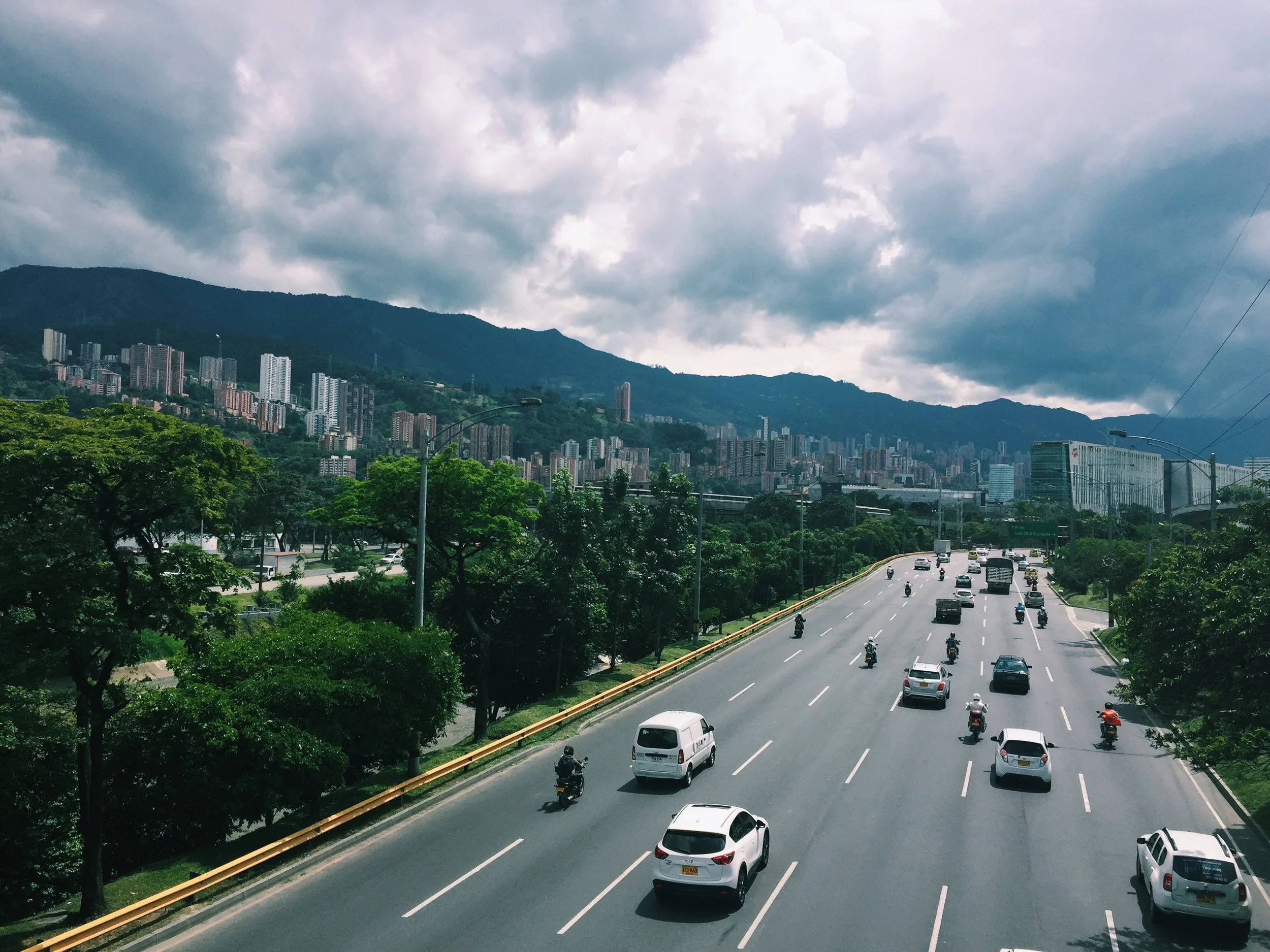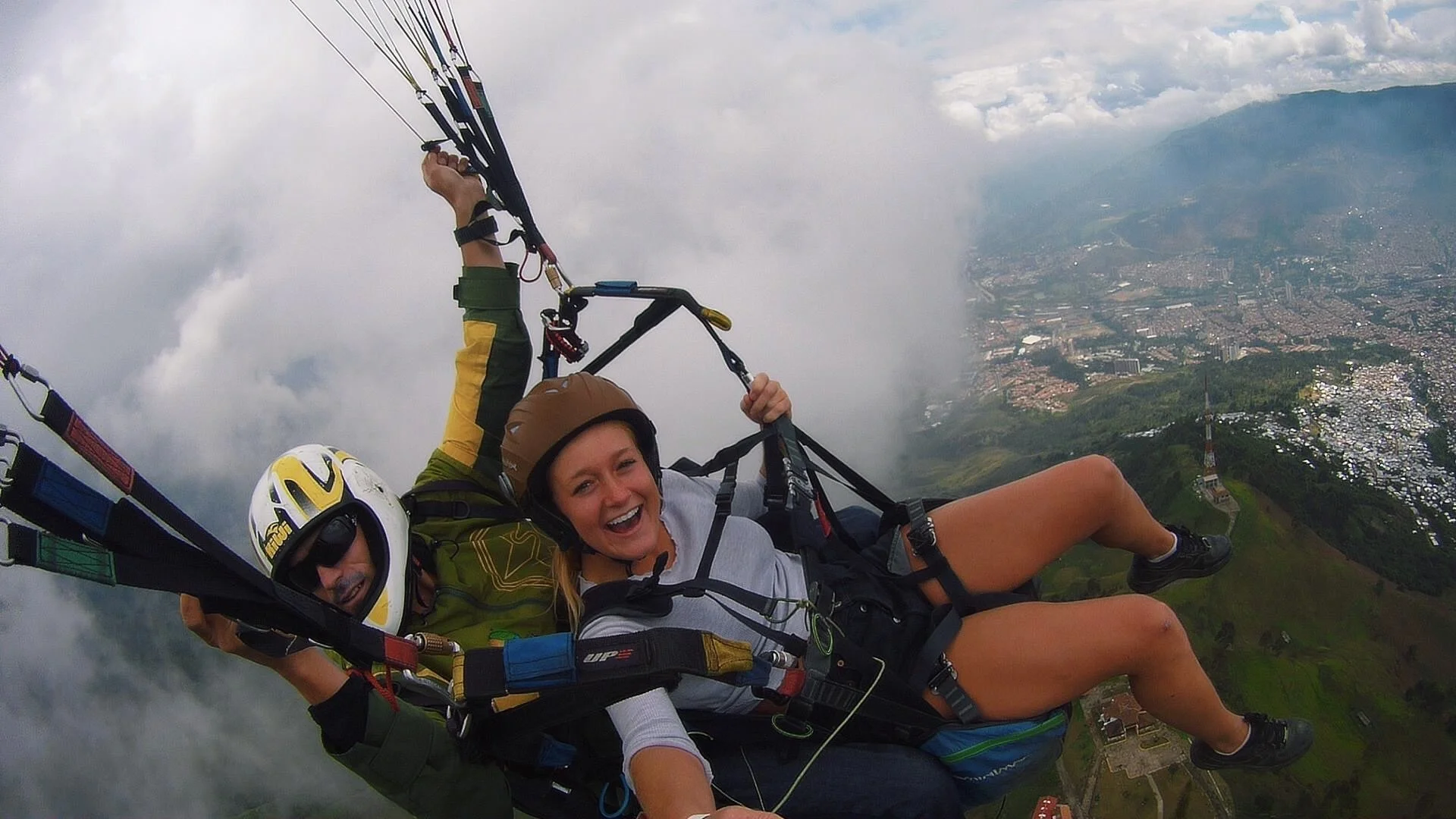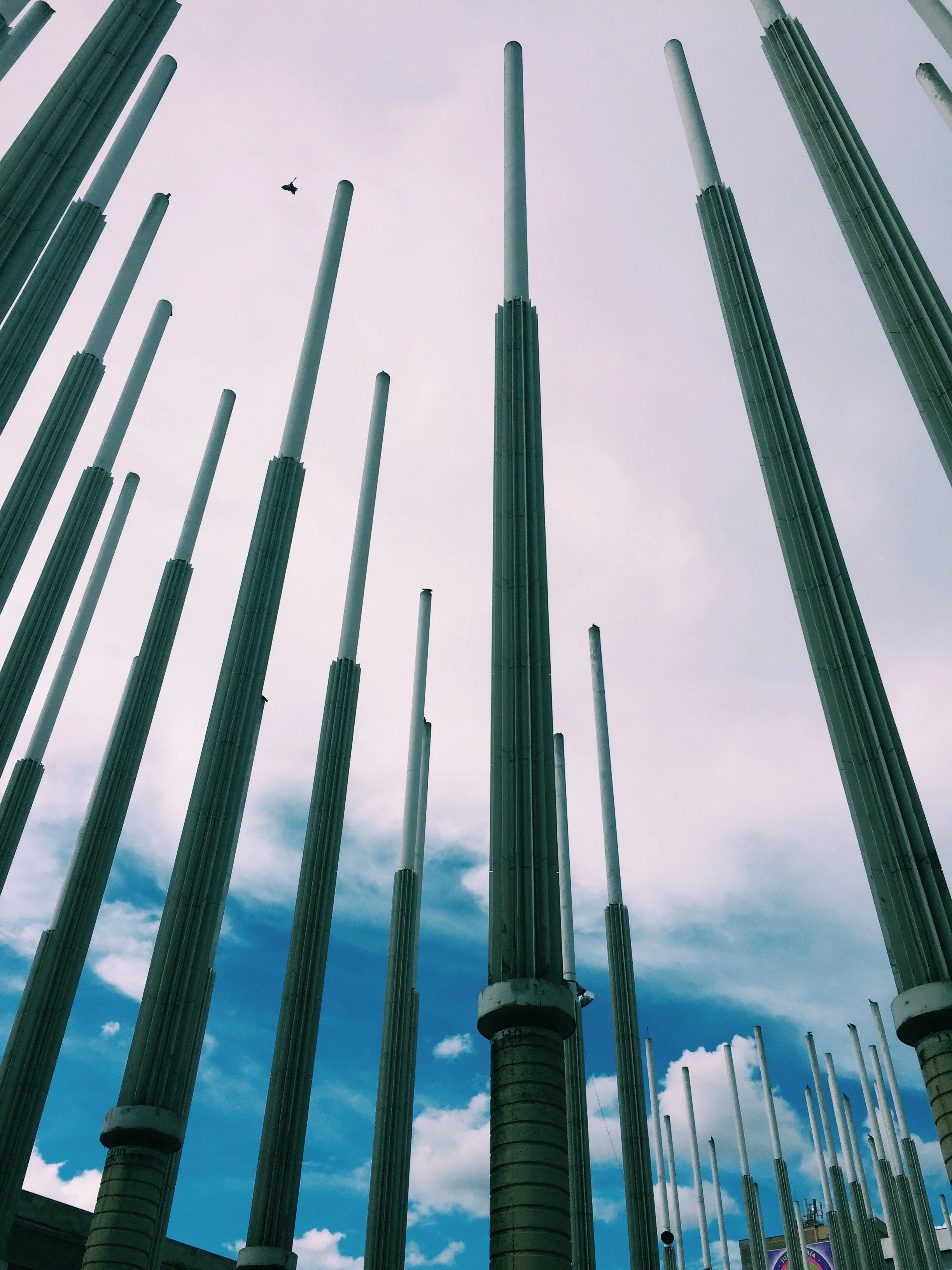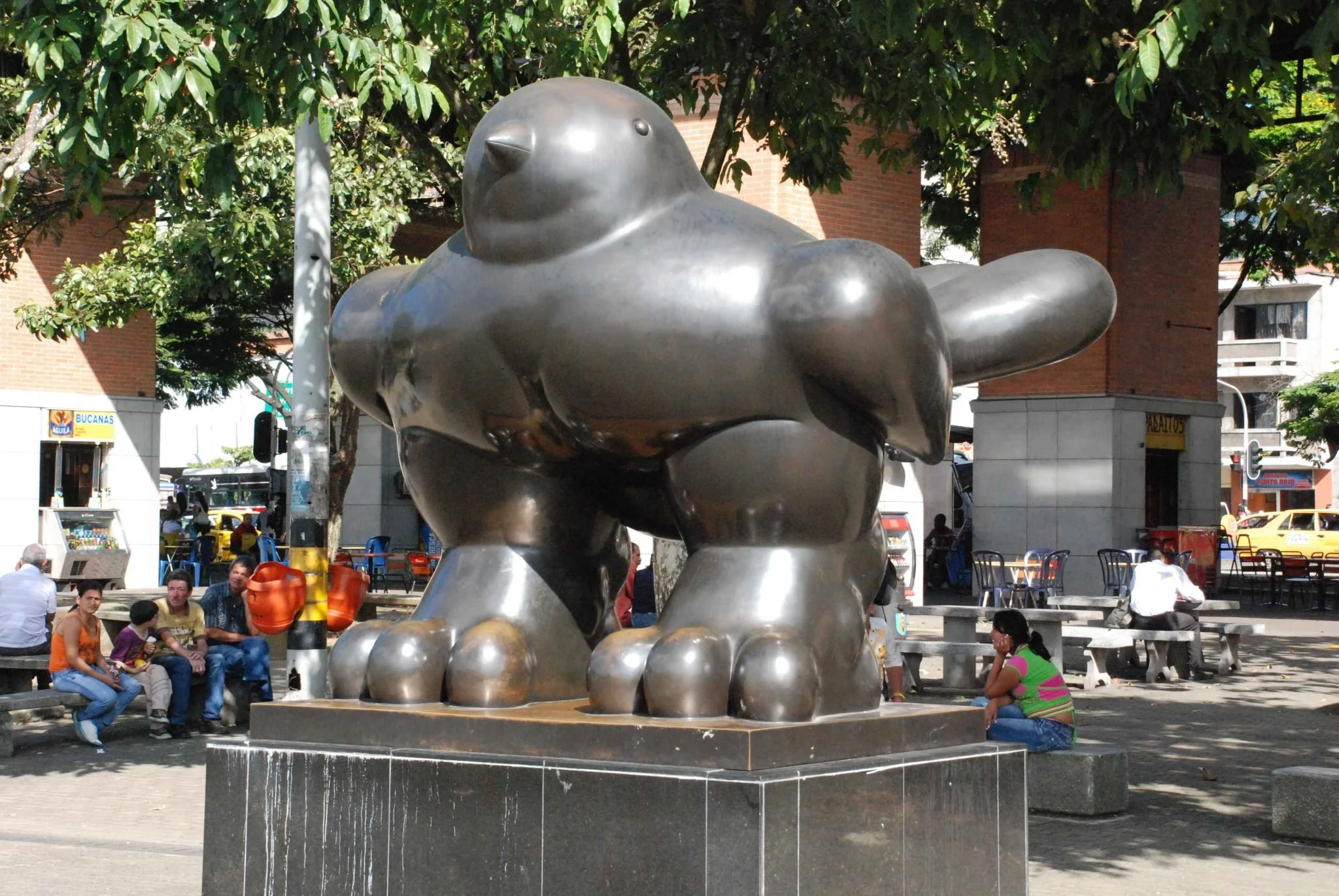Medellín
After 3 weeks of travelling round Colombia, my eyes have been opened in the city that is Medellín. Before arriving I had read some books and other travel blogs about the areas we were headed, but most of the literature is based around the drug lord Pablo Escobar or the severe corruption which has run through the country for centuries. That unfortunately can be what springs to mind when people think of Colombia, however for a place that was constantly in the news for all the wrong reasons in the recent past, it has totally transformed into a much more safe and accessible place where many travellers from all over the world now visit. The thing that we found fascinating whilst moving through was how visual and current this change is, we got a real sense of the effort that is going in to this transformation of the whole country, even in the short time we spent there.
We got to Medellin via a night bus from Santa Marta. This is not advisable, as it takes 18 hours and it's ridiculously long. However we happened to be travelling on a bank holiday so flights were extremely costly. Normally you can grab a flight for £40, the bus was £27. Most backpackers head straight to El Poblado, known among the locals as “the home of Gringo's”. When we first arrived we thought the term 'gringo' was offensive, however we slowly realised the locals use it to describe pretty much any white foreigner who roams the streets of South America. El Poblado has an amazing vibe, it's full of culture, great little bars and restaurants, and comes alive at night. We stayed at Selina's hostel which is the biggest hostel in South America and we would definitely recommend it. Another bonus about Medellín is the weather, it's known for having 'primavera eterna' which translates as eternal Spring, so the temperature is never extreme and is generally between 20-30 degrees all year round.
On our first day in Medellín we decided to make the most of feeling fresh and headed to the Museo de la Casa Memoria, a museum explaining a bit about the history of the violence that occurred in Colombia's dark past. The museum offered an inspiring documentation of the country's past because it was super interactive.
One room concentrated on photography to capture specific frames of families who were forced to suffer. Another room set the focus on music, and how musical expression gave a voice to these communities. Writing on the walls described music as a way of healing and strengthening; as a way of resisting the abuse of power that dominated at this time. The most touching room was a small dark one at the back. It had tiny flickering lights all over the walls alongside portrait slideshows of family photos. The slideshow would show the photo, which would then slowly fade until it showed a black screen with the victims name printed, and the reason why they died. Most showed 'homicidio', or 'desaparición forzada' (forced disappearance), with some of them dating as recently as 2014. The display had such an impact, we loved how art was used as a way of understanding or approaching the collective memory of such a complex history. The best bit is - it's totally free! So therefore a definite must do in Medellín.
On day two we visited the botanical gardens for a bit of peace and tranquility. There's something so calming about walking through the gardens, and the sculpture they've built in the middle is incredible. On the sign at the beginning we read that there were sloths, however after half an hour of sloth hunting we gave up and headed back to the hostel.
One of the main attractions in Medellín is paragliding over the city - and it certainly did not disappoint. There's honestly nothing like the feeling of gliding up in the clouds above the city. The views are stunning and it really gives you the chance to see the whole city and all the different barrios. We would highly recommend to do it through the company Gtopik, they had a great service and the guides were lovely!
Medellín on the weekend completely comes to life. The bars are spilling out on to the street, music blaring from every street corner and people dancing not only in the clubs but all over the streets too. It's magical. On our Friday in Medellín we hit up the bars around El Poblado, before ending up at a club called Eslabon Prendido, which had 3 floors and on top a techno balcony with a view of the entire city. The night before we had also been to Salon Amador by recommendation and it was unreal, the Colombian's certainly know how to party.
Another pretty informative thing to do in Medellín is the official walking tour - as touristy as this sounds, it was actually pretty fun. We did this on our third day, and this is when we truly understood the very real change in the city that is still going on today. In 1991 it was the murder capital of the world, which is hard to believe when you walk around the streets in the day. Our guide was amazing, she pointed out the many signs of change such as the architecture. Standing in what used to be the dodgy area of the mercado central, we stood looking up at newly built pillars towering over the square which light up at night. The square is now known as the square of light and hope. We found it pretty cool how the architecture is used as a symbol of transformation in the city. Education is another pillar for development in Medellín; the state even built many free public libraries which they entitled, ‘sexy libraries’ in attempt to change the old stereotypical, dull image of a library.
Another reason why the city was previously considered dangerous was because of the lack of transport around the city, therefore cutting off some of local barrio's and making them reputable for danger. Now the city has cable cars; a metro; and a Boris bike equivalent which is completely free to use! Locals will tell you that the metro symbolises not only a transportation system, but that it has a deeper cultural meaning as it connects the city in a way that wasn’t previously possible. It's super cheap and totally safe for tourists.
Our favourite story of Medellin was when we arrived at the strange looking bird statues by Botero in the Plaza San Antonio. The original statue was bombed during a concert, and 23 people died. The mayor quickly wanted it covered, but the artist ordered him to keep it... Instead he built a new statue exactly the same beside it, and placed a plaque under the broken one with all of the names and ages of the victims. These two birds are like the perfect summary of Medellín: a city which is far from perfect but that is constantly working harder to enter into better days.
What we found interesting was that during the tour our guide specifically stated that she was not going to even mention Escobar’s name, in case the locals overheard or misinterpreted what she was saying. She forced herself to use only nicknames, and for the most part called him 'Voldemort'. The damage Escobar and his cartel have caused throughout the country is still prevalent even today, despite the major effort to overcome it. The sometimes glorified image of him shown through series like 'Narcos' is something the Colombians are ashamed and disappointed by. However despite all of the negative history described, Medellín is a city where the locals seem to be well natured and pretty happy. We were told that this is because Colombians channel their collective and selective memory, and always focus on the positives. They make effort to remember proudly sporting or political accomplishments achieved by Colombians, and extract all the joy from these small happy moments in order to overpower the dark. We found this attitude towards the past really inspiring.
Whilst we strolled through the park we encountered something pretty cool, which had been set up by the alcaldía, the local mayor. It was just a cardboard wall in the middle of the park entitled with the question 'How do you feel about Colombia?' In front there was a lady giving you tiny balls of paint, each with adjectives such as 'happy' 'proud' 'relaxed' or 'stressed' on the front. The objective was to break the stigma of the area by chucking these coloured balls of paint at the wall, releasing energy whilst also bringing the community together. This small display was just one of the things we witnessed which showed attempt to unite the citizens of Medellín.
Our last day fell on a Saturday, and just so happened to be the Medellin vs Athletico Nacional football match. We had heard rumour circling through travellers all over Colombia that the football was a must do. Being the avid football fans that we are... we headed for the stadium with no tickets or plan, not really knowing what to expect. It just so happened to be one of the biggest games of the year, and it was incredible. The stadium came alive, with thousands of people jumping and chanting for the full 90 mins as well as an hour after it had finished. The north and south stands are where the rowdy lot sit - and it is a LOT of fun, but if you're looking for something a little less intense then the atmosphere in the other stands is still super fun.
As always, our trip in Medellín did not go without some delicious meals out. If you're heading this way then here's some unmissable eats:
Mercado Del Rio - this is a trendy area with loads of pop-up bars and restaurants offering something for everyone. It's amazing on a thurs/fri night and very affordable
Velvet - a Belgian inspired cafe which has the best coffee, we recommend the choccacino - a cappuccino with a thick layer of melted Belgian chocolate at the bottom!
Como Pez en el agua - patisserie with the yummiest croissants ever
Burdo - restaurant in El Poblado, for all the burger fans the Machete burger is the dream... The brunch is a must do too.
Roll Up sushi burrito - sushi made in the shape of a burrito, need we say more?

